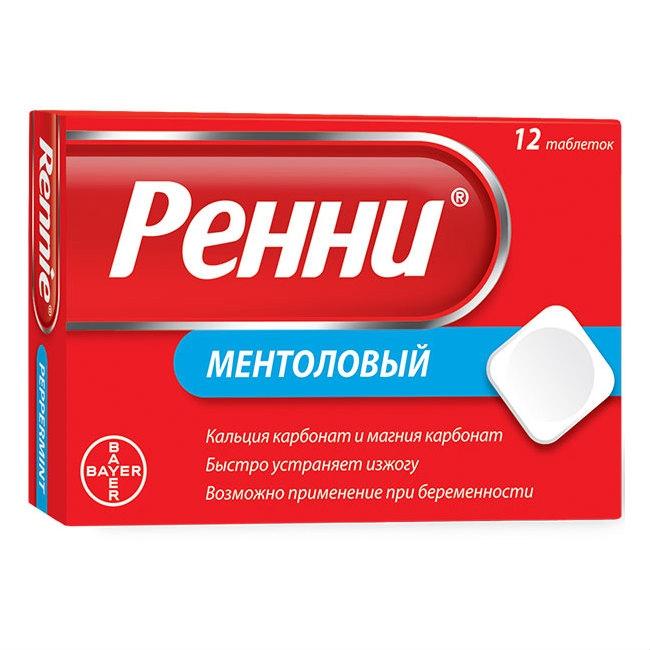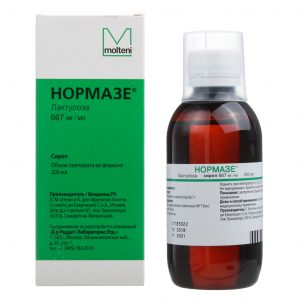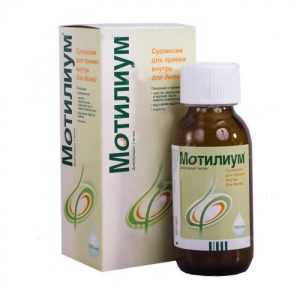Description
Release form
chewable tablets
Packaging
12 pcs
Pharmacological action
Renny – antacid.
Pharmacodynamics
Topical antacid. The Rennie ® tablet contains antacids – calcium carbonate and magnesium carbonate, which provide fast and long-lasting neutralization of excess hydrochloric acid of gastric juice, thereby exerting a protective effect on the gastric mucosa. Achieving a positive effect within 3-5 minutes is due to the good solubility of the tablets and a high content of calcium.
Pharmacokinetics
As a result of the interaction of Rennie ® with gastric juice, soluble calcium and magnesium salts are formed in the stomach.
The degree of absorption of calcium and magnesium from these compounds depends on the dose of the drug. The maximum absorption is 10% calcium and 15 20% magnesium. A small amount of absorbed calcium and magnesium is excreted through the kidneys. In case of impaired renal function, the concentration of calcium and magnesium in the plasma can increase. In the intestine, insoluble compounds are formed from soluble salts, which are excreted in the feces.
Indications
Symptoms associated with increased acidity of the gastric juice and reflux esophagitis (including those caused by errors in diet, taking medications, alcohol abuse, coffee, nicotine):
heartburn
acidic belching srdlp pain in the stomach srdlp feeling of overflow or heaviness in the epigastric region
dyspepsia
dyspepsia of pregnant women.
Contraindications
hypersensitivity to the components of the drug
severe renal failure
hypercalcemia
hypophosphatemia
nephrocalcinosis
children under 12 years of age.
Use during pregnancy and lactation
When used in recommended doses, the drug is not harmful to the fetus or child.
Ingredients
1 tablet contains:
Active ingredients:
calcium carbonate 680 mg
magnesium carbonate basic 80 mg
Excipients:
sucrose
starch sweet potato
Dosage and administration
Inside, chew or keep in your mouth until completely resorbed.
Adults and children over 12 years of age (unless advised otherwise by a doctor) when symptoms appear – 1-2 tablets.
If necessary, you can repeat the drug after 2 hours.
The maximum daily dose is 11 tablets.
Side effects
If the recommended doses are observed, the drug is well tolerated, however, in very rare cases, allergic reactions are possible – rash, Quincke’s edema, anaphylactic reactions.
Drug Interaction
Changing the acidity of gastric juice while using antacids can reduce the rate and extent of absorption of other drugs at the same time, so medicines should be taken 1-2 hours before or after taking antacids.
Tetracycline series antibiotics, fluoroquinolones, cardiac glycosides, levothyroxine, iron preparations, fluorides, phosphates – with simultaneous use of antacids reduce the absorption of these drugs.
Thiazide diuretics – Regularly monitored serum calcium levels for concomitant administration with antacids.
Anticholinergic drugs enhance and prolong the action, slowing gastric emptying.
Overdose
Symptoms: prolonged use of the drug in high doses in patients with impaired renal function can cause hypermagnesemia, hypercalcemia, alkalosis, which manifest themselves with nausea, vomiting, muscle weakness.
Treatment: You should discontinue the medication and consult a doctor immediately.
Storage conditions
At a temperature not exceeding 25 ° C.
Expiration
3 years.
pharmacy terms and conditions without a prescription
tablet dosage form
Formulation
Bayer Pharma AG, Germany




